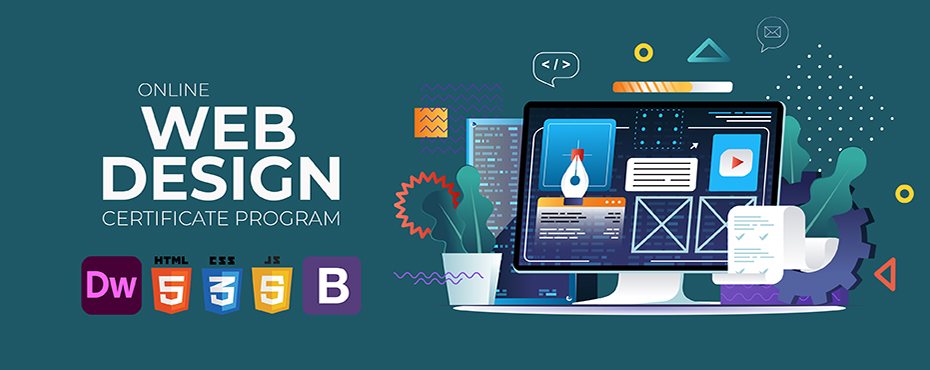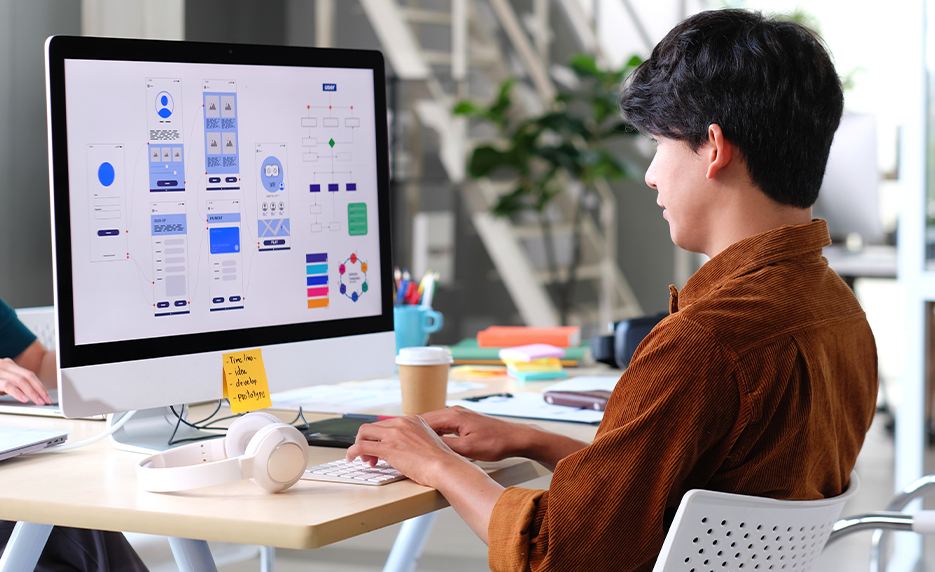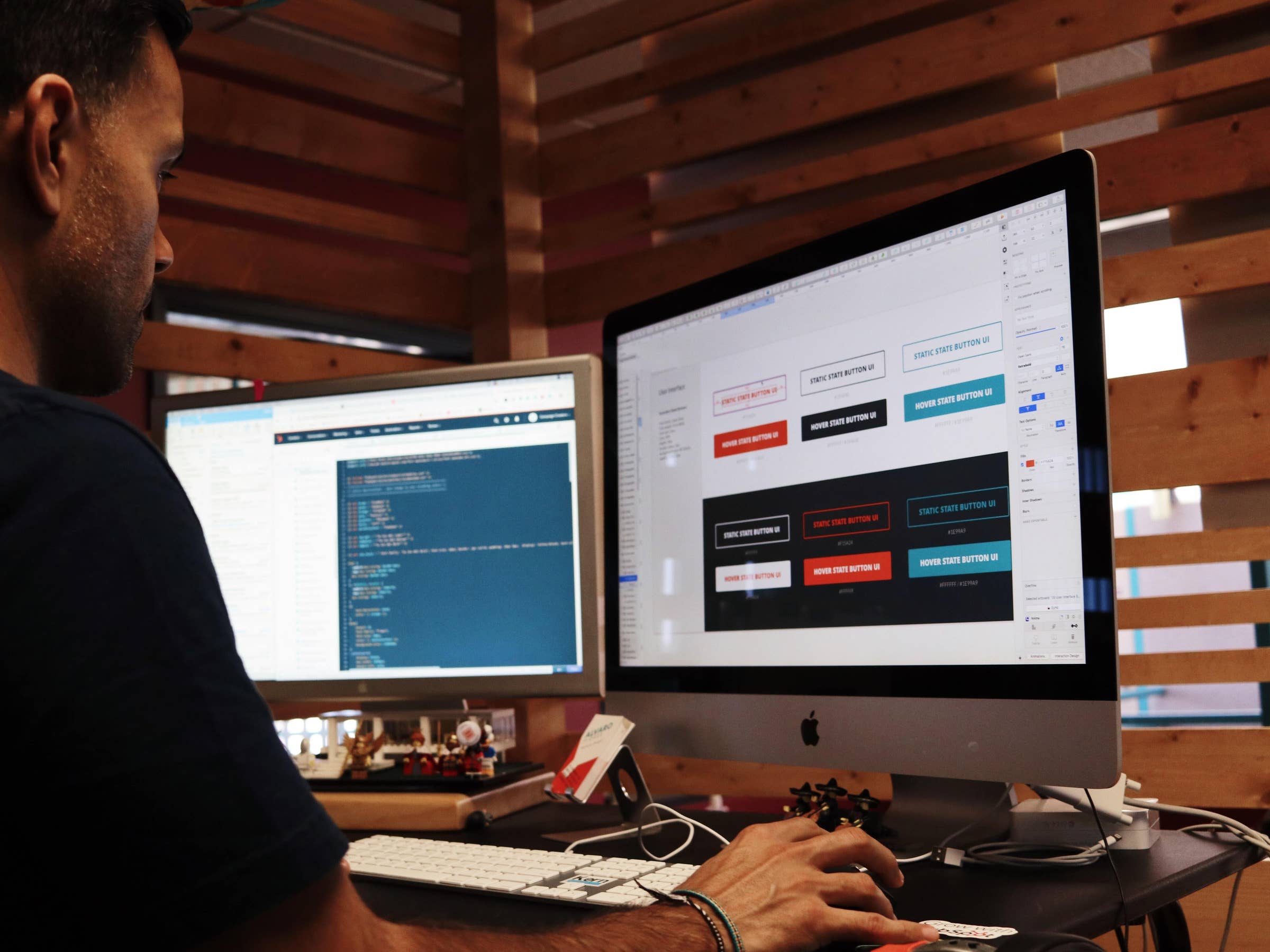All Categories
Featured
Table of Contents
- – 12 Essential Tips For Improving Your Web Desig...
- – Sustainable Web Design: Home Tips and Tricks:
- – Boxcar Studio - Wordpress & Drupal Web Design...
- – 34 Of The Best Website Designs To Inspire You...
- – What Is Web Design? A Comprehensive Guide - W...
- – Wicky Design: Philadelphia Web Design Tips an...
- – Arch Web Design: Top-rated Web Design Agency...
- – Web Design - Website Design Tutorials, Artic...
- – Why Good Web Design Is Important, And Why Yo...
- – Awwwards - Website Awards - Best Web Design ...
- – Web Design Tools & Software - Webflow Tips a...
12 Essential Tips For Improving Your Web Design In 2022 Tips and Tricks:
Quick summary Functionality and the utility, not the visual style, identify the success or failure of a site. Considering that the visitor of the page is the only person who clicks the mouse and for that reason decides everything, user-centric design has developed as a basic approach for effective and profit-oriented website design - web design frederick md.
and the energy, not the visual design, identify the success or failure of a site. Considering that the visitor of the page is the only individual who clicks the mouse and for that reason chooses everything, user-centric style has actually ended up being a basic technique for successful and profit-oriented web design. If users can't use a feature, it might as well not exist.
g. where the search box should be positioned) as it has actually currently been carried out in a variety of articles; instead we focus on the techniques which, used correctly, can result in more advanced design decisions and simplify the procedure of perceiving provided details. Please notice that you might be thinking about the usability-related articles we have actually released prior to: Principles Of Excellent Website Design And Effective Web Style Standards, In order to utilize the principles correctly we initially need to comprehend how users communicate with websites, how they think and what are the standard patterns of users' habits.
Sustainable Web Design: Home Tips and Tricks:
Visitors glance at each new page, scan some of the text, and click on the first link that catches their interest or vaguely resembles the important things they're trying to find. There are big parts of the page they don't even look at. The majority of users browse for something interesting (or beneficial) and clickable; as quickly as some appealing prospects are discovered, users click.
If a page offers users with high-quality material, they are willing to jeopardize the material with ads and the design of the website. This is the reason that not-that-well-designed sites with high-quality material get a lot of traffic over years. Content is more essential than the design which supports it.

Extremely simple concept: If a site isn't able to meet users' expectations, then designer failed to get his job done appropriately and the business loses money. The higher is the cognitive load and the less instinctive is the navigation, the more ready are users to leave the site and search for alternatives.
Boxcar Studio - Wordpress & Drupal Web Design ... - Ann Arbor Tips and Tricks:
Neither do they scan webpage in a direct style, going sequentially from one site section to another one. Instead users satisfice; they select the first sensible choice. As quickly as they find a link that appears like it may cause the objective, there is a really great opportunity that it will be right away clicked.
It does not matter to us if we understand how things work, as long as we can utilize them. If your audience is going to act like you're developing signboard, then style terrific billboards." Users desire to be able to manage their browser and depend on the consistent data presentation throughout the website.
If the navigation and site architecture aren't instinctive, the variety of enigma grows and makes it harder for users to comprehend how the system works and how to get from point A to point B. A clear structure, moderate visual hints and quickly recognizable links can assist users to discover their course to their goal.
34 Of The Best Website Designs To Inspire You In 2022 Tips and Tricks:

Given that users tend to check out sites according to the "F"-pattern, these 3 declarations would be the very first components users will see on the page once it is packed. The design itself is easy and intuitive, to understand what the page is about the user requires to search for the answer.
When you've accomplished this, you can interact why the system works and how users can take advantage of it. People will not utilize your website if they can't discover their method around it. 2. Don't Squander Users' Patience, In every project when you are going to use your visitors some service or tool, try to keep your user requirements very little.
Newbie visitors want to, not filling long web types for an account they may never ever utilize in the future. Let users check out the site and discover your services without requiring them into sharing personal information. It's not reasonable to require users to enter an e-mail address to check the feature.
What Is Web Design? A Comprehensive Guide - Wix.com Tips and Tricks:
And that's what you desire your users to feel on your web site. The registration can be done in less than 30 seconds as the type has horizontal orientation, the user doesn't even need to scroll the page.
A user registration alone is enough of an obstacle to user navigation to cut down on inbound traffic. 3. Handle To Focus Users' Attention, As websites offer both static and vibrant content, some elements of the user interface bring in attention more than others do. Obviously, images are more eye-catching than the text simply as the sentences marked as bold are more appealing than plain text.
Focusing users' attention to particular areas of the site with a moderate usage of visual elements can help your visitors to get from point A to point B without thinking about how it in fact is expected to be done. The less concern marks visitors have, the they have and the more trust they can develop towards the company the site represents.
Wicky Design: Philadelphia Web Design Tips and Tricks:
Aim For Feature Direct exposure, Modern web designs are generally slammed due to their approach of guiding users with visually appealing 1-2-3-done-steps, big buttons with visual results etc. From the design viewpoint these elements really aren't a bad thing.
The website has 9 main navigation alternatives which show up at the very first glimpse. The option of colors might be too light, though. is an essential principle of successful user interface design. It doesn't truly matter how this is achieved. What matters is that the material is well-understood and visitors feel comfortable with the way they engage with the system.
com gets straight to the point. No charming words, no overemphasized statements. Rather a rate: just what visitors are searching for. An ideal option for efficient writing is touse brief and concise expressions (come to the point as rapidly as possible), use scannable design (categorize the material, use numerous heading levels, utilize visual elements and bulleted lists which break the circulation of consistent text blocks), usage plain and unbiased language (a promotion does not need to sound like advertisement; provide your users some sensible and objective reason why they must use your service or remain on your site)6.
Arch Web Design: Top-rated Web Design Agency For Saas ... Tips and Tricks:
Users are seldom on a site to delight in the style; moreover, in many cases they are trying to find the details regardless of the design - web design frederick md. Pursue simplicity rather of intricacy. From the visitors' perspective, the finest site style is a pure text, without any advertisements or additional content obstructs matching precisely the query visitors used or the material they have actually been trying to find.
Finch plainly presents the details about the website and provides visitors a choice of alternatives without overcrowding them with unneeded material. Not just does it help to for the visitors, however it makes it possible to view the information provided on the screen.
Complex structures are more difficult to check out, scan, analyze and deal with. If you have the option between separating two design segments by a visible line or by some whitespace, it's normally better to utilize the whitespace solution. (Simon's Law): the much better you handle to offer users with a sense of visual hierarchy, the much easier your material will be to perceive.
Web Design - Website Design Tutorials, Articles And Free Stuff Tips and Tricks:
The same conventions and guidelines should be used to all elements.: do the most with the least quantity of cues and visual elements. Four significant points to be thought about: simpleness, clarity, distinctiveness, and focus. Simplicity consists of just the aspects that are most crucial for communication. Clearness: all parts need to be developed so their significance is not ambiguous.
Conventions Are Our Friends, Conventional design of website aspects doesn't lead to an uninteresting web site. As they minimize the finding out curve, the requirement to figure out how things work. For example, it would be an usability headache if all websites had various visual presentation of RSS-feeds. That's not that different from our regular life where we tend to get utilized to fundamental concepts of how we arrange information (folders) or do shopping (placement of items).
understand what they're expecting from a site navigation, text structure, search positioning etc. A case in point from functionality sessions is to equate the page in Japanese (assuming your web users don't understand Japanese, e. g. with Babelfish) and provide your usability testers with a job to discover something in the page of different language.
Why Good Web Design Is Important, And Why You Need It Tips and Tricks:
Test Early, Test Frequently, This so-called TETO-principle ought to be applied to every web design task as functionality tests frequently provide into considerable problems and problems related to a provided layout. Test not too late, not too little and not for the incorrect factors.
Some important points to bear in mind: according to Steve Krug, and testing one user early in the task is better than testing 50 near completion. Accoring to Boehm's first law, errors are most frequent during requirements and design activities and are the more expensive the later they are gotten rid of.
That suggests that you develop something, test it, repair it and then evaluate it once again. There may be issues which have not been found during the first round as users were virtually blocked by other issues.
Awwwards - Website Awards - Best Web Design Trends Tips and Tricks:

This holds for designers also. After you have actually worked on a website for few weeks, you can't observe it from a fresh point of view anymore. You understand how it is developed and therefore you understand precisely how it works you have the wisdom independent testers and visitors of your website wouldn't have.
It can be connected to other areas such as graphic style, user experience, and multimedia arts, however is more appropriately seen from a technological viewpoint. It has become a big part of individuals's everyday lives. It is tough to think of the Internet without animated graphics, different styles of typography, background, videos and music.

During 1991 to 1993 the World Wide Web was born. Text-only pages might be seen using a basic line-mode internet browser. In 1993 Marc Andreessen and Eric Bina, produced the Mosaic web browser. At the time there were several web browsers, nevertheless the bulk of them were Unix-based and naturally text heavy. There had been no integrated technique to graphic design components such as images or noises.
Web Design Tools & Software - Webflow Tips and Tricks:
The W3C was developed in October 1994 to "lead the Web to its full capacity by establishing common procedures that promote its advancement and ensure its interoperability." This discouraged any one business from monopolizing a propriety internet browser and programs language, which might have modified the effect of the World Wide Web as a whole.
As this has actually occurred the innovation of the web has also proceeded. There have also been considerable modifications in the method individuals use and access the web, and this has actually changed how sites are created. Since completion of the internet browsers wars [] new browsers have been released. A number of these are open source meaning that they tend to have faster development and are more supportive of new requirements.
Learn more about Lovell Media Group LLC or TrainACETable of Contents
- – 12 Essential Tips For Improving Your Web Desig...
- – Sustainable Web Design: Home Tips and Tricks:
- – Boxcar Studio - Wordpress & Drupal Web Design...
- – 34 Of The Best Website Designs To Inspire You...
- – What Is Web Design? A Comprehensive Guide - W...
- – Wicky Design: Philadelphia Web Design Tips an...
- – Arch Web Design: Top-rated Web Design Agency...
- – Web Design - Website Design Tutorials, Artic...
- – Why Good Web Design Is Important, And Why Yo...
- – Awwwards - Website Awards - Best Web Design ...
- – Web Design Tools & Software - Webflow Tips a...
Latest Posts
Website Creators Frederick MD
Webpage Design (Article) - Further Learning - Khan Academy Tips and Tricks:
Lifted Logic: Web Design In Kansas City - Seo - Website ... Tips and Tricks:
More
Latest Posts
Website Creators Frederick MD
Webpage Design (Article) - Further Learning - Khan Academy Tips and Tricks:
Lifted Logic: Web Design In Kansas City - Seo - Website ... Tips and Tricks: